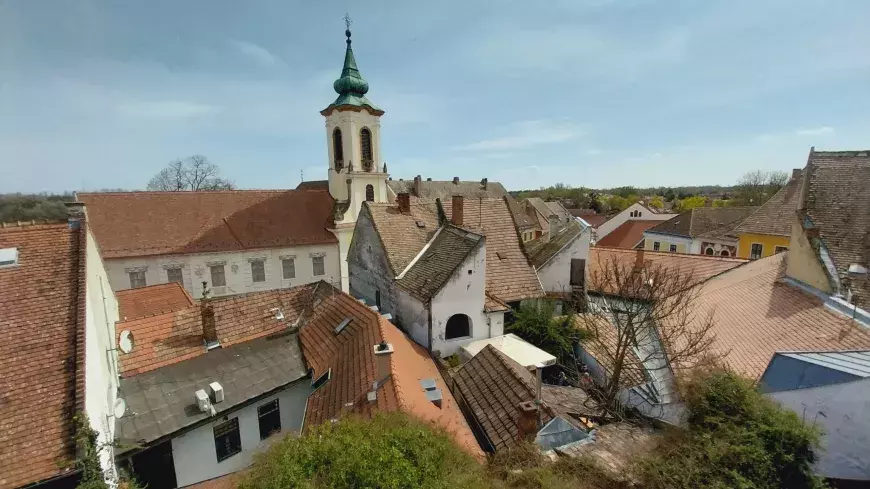Day trips from Budapest: Szentendre
Located just north of Budapest along the Danube River, the riverside town of Szentendre is one of the most popular day-trip destinations from the capital. With its Mediterranean-style town center, cobbled streets, vibrant art scene, and unique Serbian heritage, it offers visitors a charming blend of culture, history, and relaxation.
Getting There
Szentendre is easily reached from Budapest by suburban HÉV train, departing regularly from Budapest's Batthyány Square. The journey takes around 40 minutes. Alternatively, in spring and summer, visitors can travel by boat from Budapest’s city center, enjoying a scenic ride along the Danube.
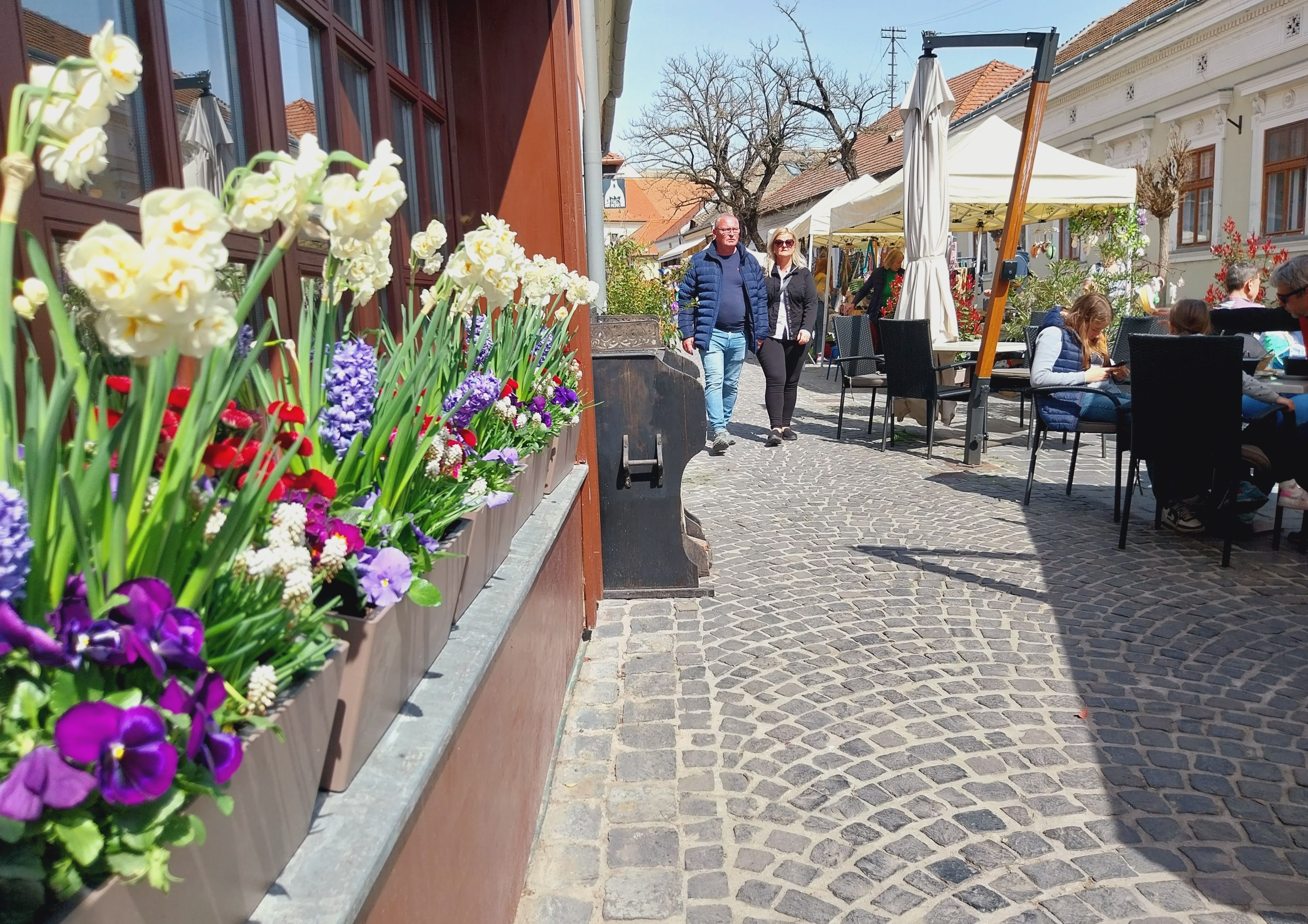
The main pedestrian street features many restaurants, cafés, and bars
The history of Szentendre
Szentendre’s history stretches back to Roman times, when a settlement called Ulcisia (Castra) or "Wolf Fort" stood here along the Danube limes. After centuries of invasions and changing rule, the town gained new life in the 17th century when waves of Serbian refugees fled northward from the Ottoman Empire. Welcomed by the Habsburgs, they brought with them their Orthodox faith, art, and architecture—shaping Szentendre into a culturally rich and diverse town. Visitors will notice Serbian-language plaques on buildings and streets, as well as several beautiful Orthodox churches.
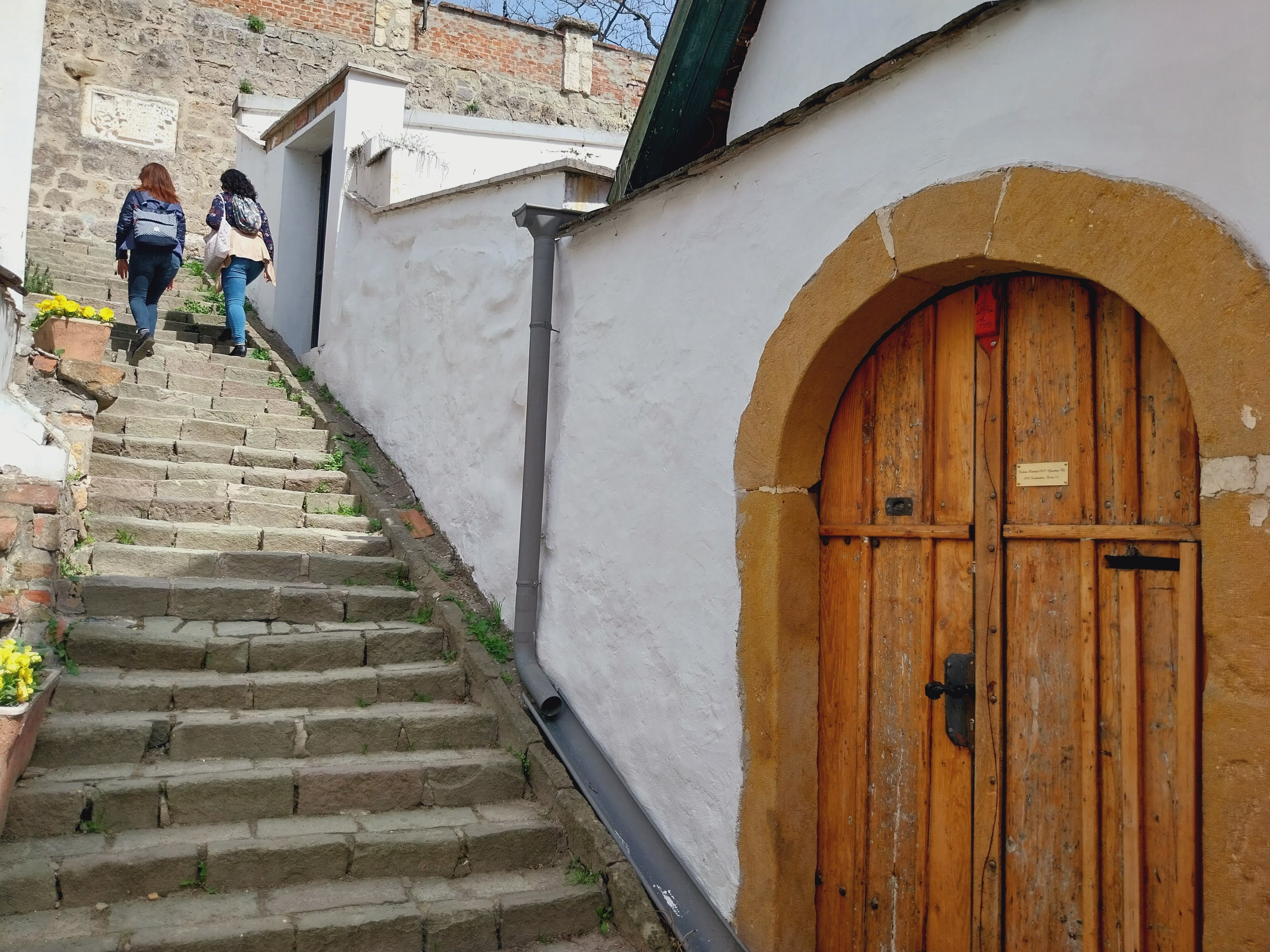
The charming narrow streets and steps of downtown Szentendre
By the 18th century, Szentendre had become a thriving merchant town, known for its mix of Hungarian, Serbian, Dalmatian, and German communities. Its hillside churches, colorful facades, and narrow streets still reflect this multi-ethnic past. In the 20th century, artists were drawn to its picturesque charm, founding the Szentendre Artists’ Colony, which helped establish the town as Hungary’s unofficial “art capital.” Today, Szentendre remains a vibrant cultural center with deep historical roots.
A Town of Art and Color
Szentendre has long been a favorite among Hungarian painters and sculptors. Today, the town is filled with galleries, museums, and studios. Highlights include the Ferenczy Museum, showcasing works by Hungary’s best-known artistic family; the Béla Czóbel Museum, dedicated to the early modernist painter; and the Margit Kovács Ceramic Museum, which features whimsical, folkloric sculptures in a peaceful setting.
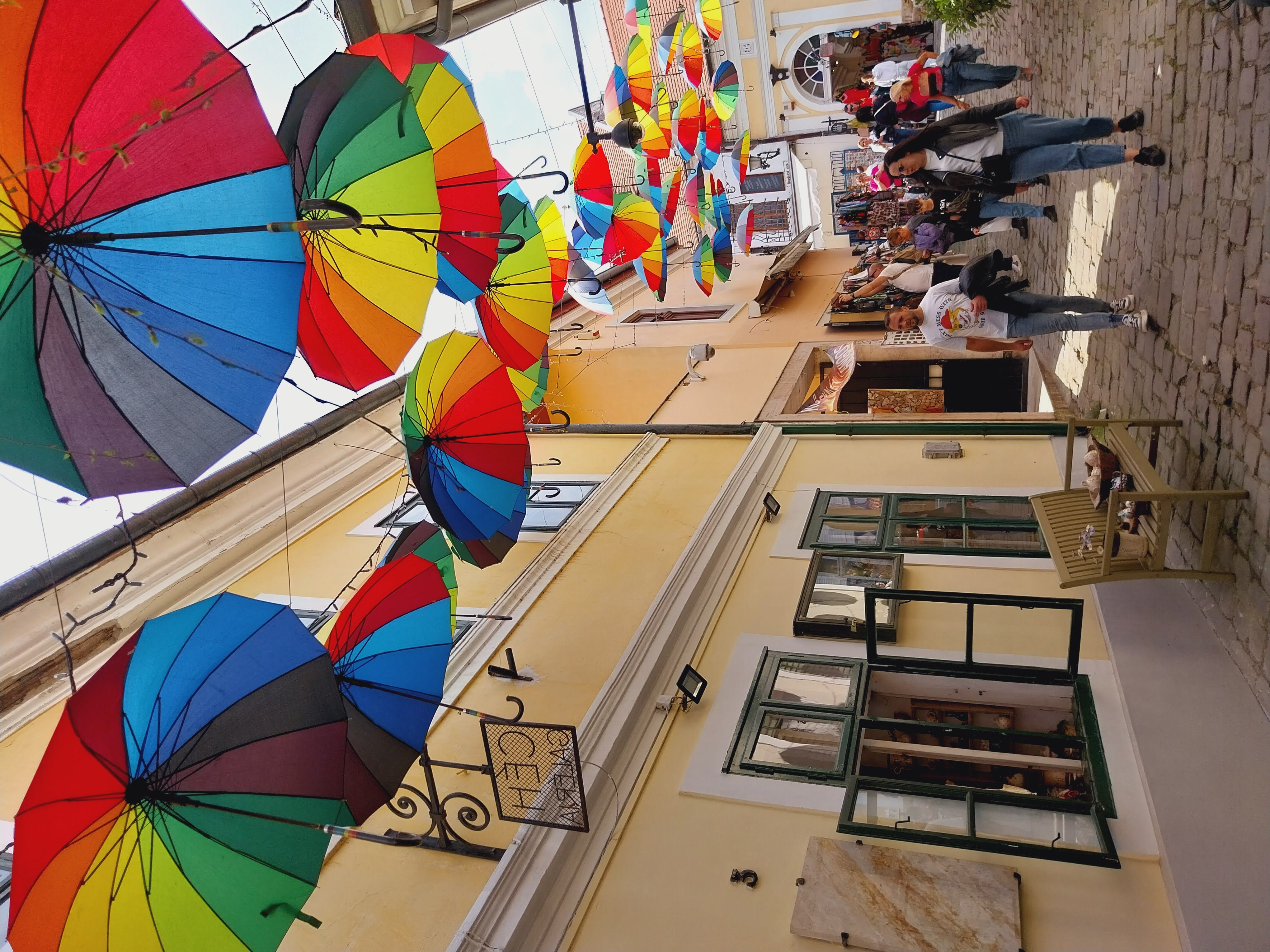
Art lovers will also enjoy the Szentendre Gallery, the Art Mill, and the Vajda Museum & Photolab, which host contemporary and experimental exhibitions throughout the year.
A short trip outside the center leads to the Open-Air Ethnographic Museum, Hungary’s largest and most prominent outdoor folk museum. Here, traditional village buildings from all regions of the country and Transylvania have been reconstructed, offering a glimpse into rural life from centuries past.
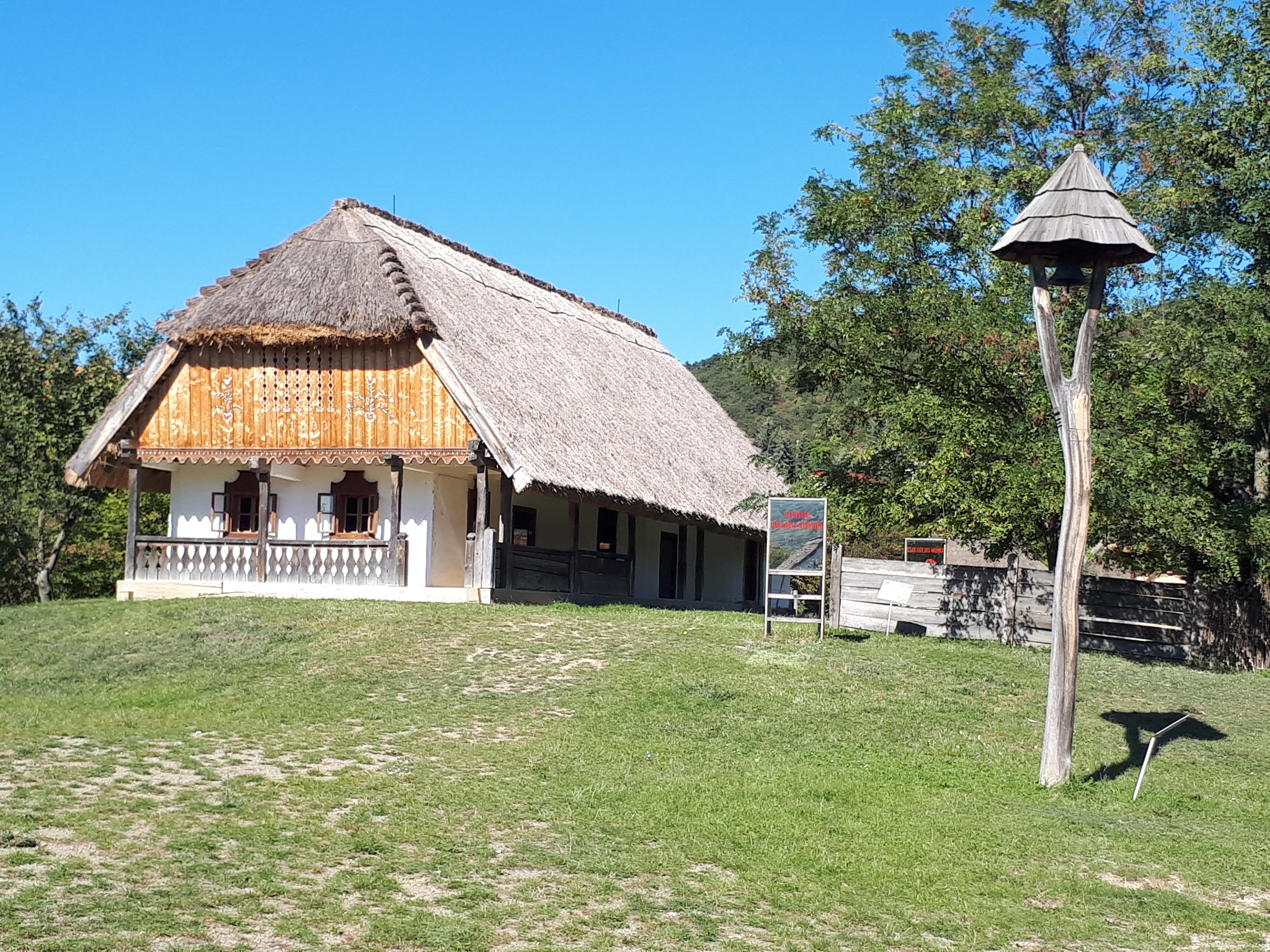
Scenery at the Open-air Ethnographic Museum
Serbian Heritage on Display
The Museum of the Serbian Orthodox Church, located in a former bishop’s residence on the main square, displays a fine collection of icons, religious objects, and liturgical garments. Just next door stands the Church of the Annunciation, one of the town’s most beautiful Serbian Orthodox churches.
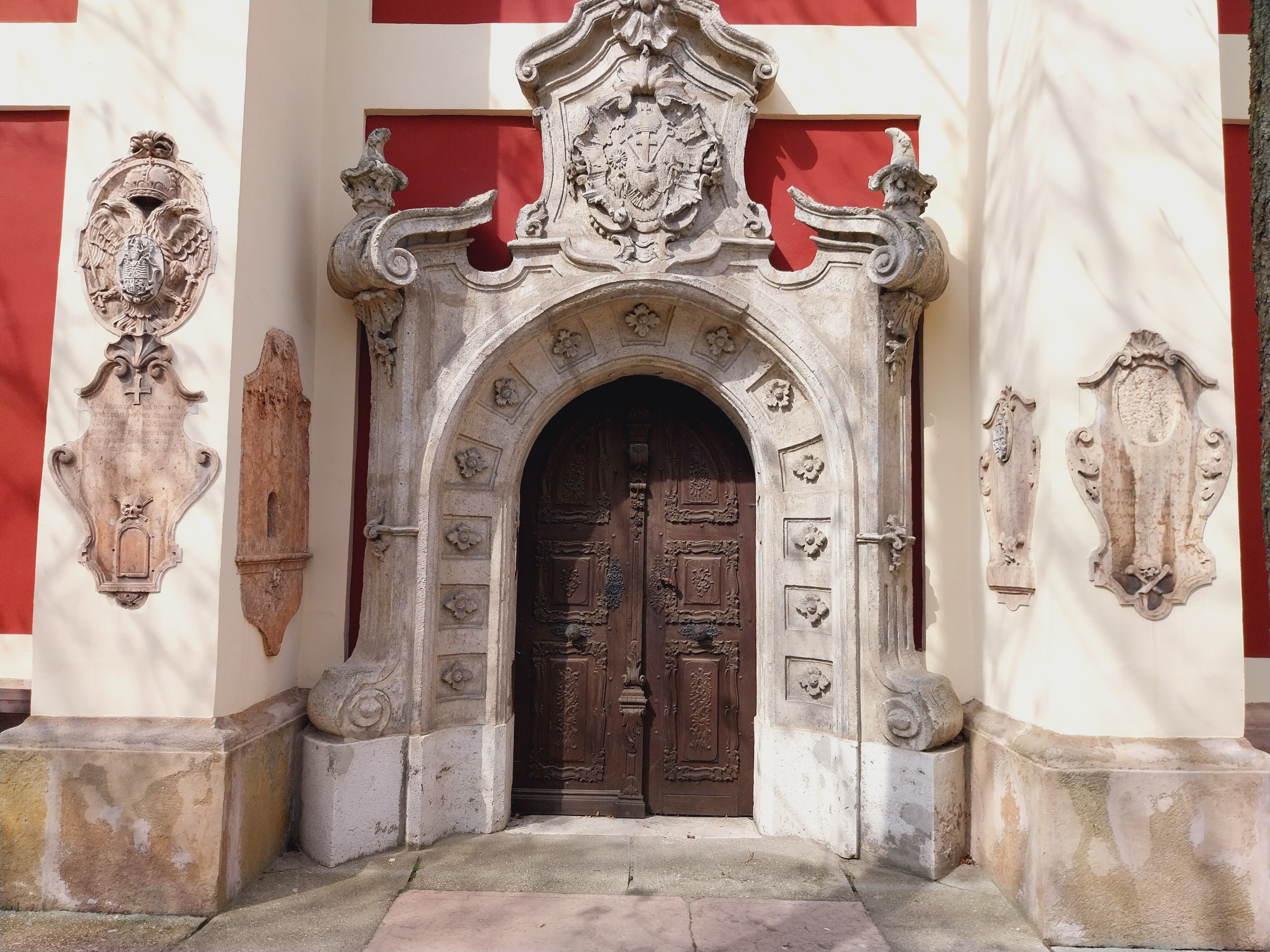
Ornate door of the so-called Belgrade Cathedral
The 48 meter tall Belgrade Cathedral stands as a prominent symbol of Szentendre's rich Serbian heritage. Constructed between 1756 and 1764, it was built on the site of an earlier 15th-century Serbian Orthodox church. The cathedral features Baroque architecture with Rococo elements, evident in its ornate bell tower and intricately carved stone entrances.
In addition to the Belgrade Cathedral, Szentendre is home to several other historic Serbian Orthodox churches that reflect the town’s rich multicultural heritage. On the main square stands the Church of the Annunciation (Blagovestenszka Church, Fő tér 5.), a charming Baroque gem built in 1752, notable for its elegant iconostasis crafted by Viennese artists. A short walk away is the Church of Saint Archangels Michael and Gabriel (Pozsarevacska Church, Kossuth Lajos utca 1.), named after the Serbian town of Požarevac, which served the spiritual needs of a smaller Orthodox community in the 18th century. Further down by the Danube promenade lies the Church of the Transfiguration of the Lord (Preobrazsenszka Church, Bogdányi út 42.), with its modest exterior hiding a richly decorated interior, offering a peaceful and authentic glimpse into the religious life of Szentendre’s Serbian population.
Relax and Explore
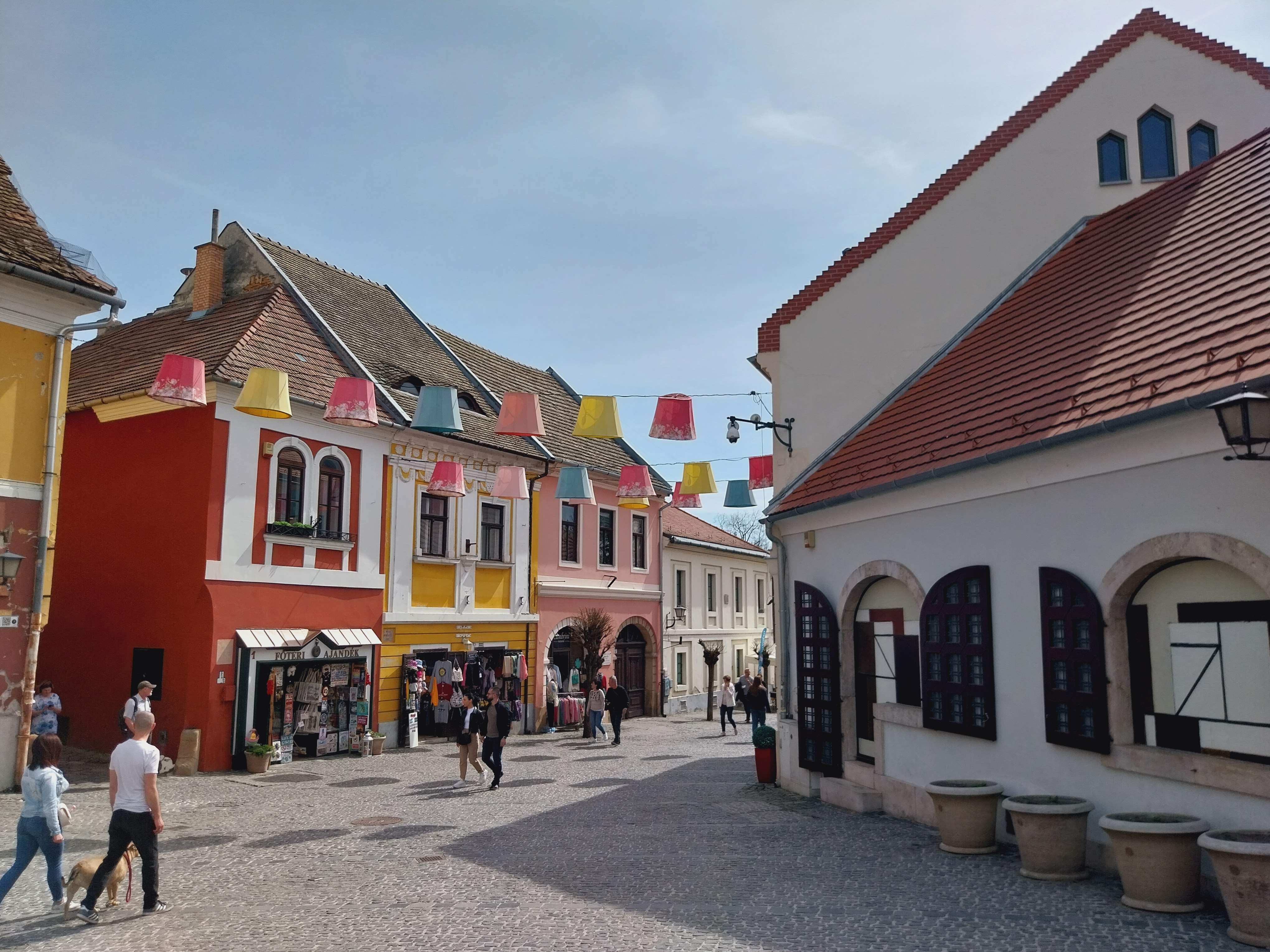
Szentendre’s charming downtown is perfect for strolling. Visitors can wander through art galleries, browse gift shops, or enjoy coffee and cake in one of the many riverside cafés. Don’t miss the town’s sweet specialty: marzipan. The local Marzipan Museum features sculptures made entirely from the sugary treat.
For those interested in religious architecture, the town also has a variety of Roman Catholic, Evangelical, and Reformed churches, including the Church of Saint John the Baptist, the Church of Saints Peter and Paul, and the Evangelical Church on Luther Square. There’s also a small Jewish Memorial House and Prayer Room, located in a former synagogue.
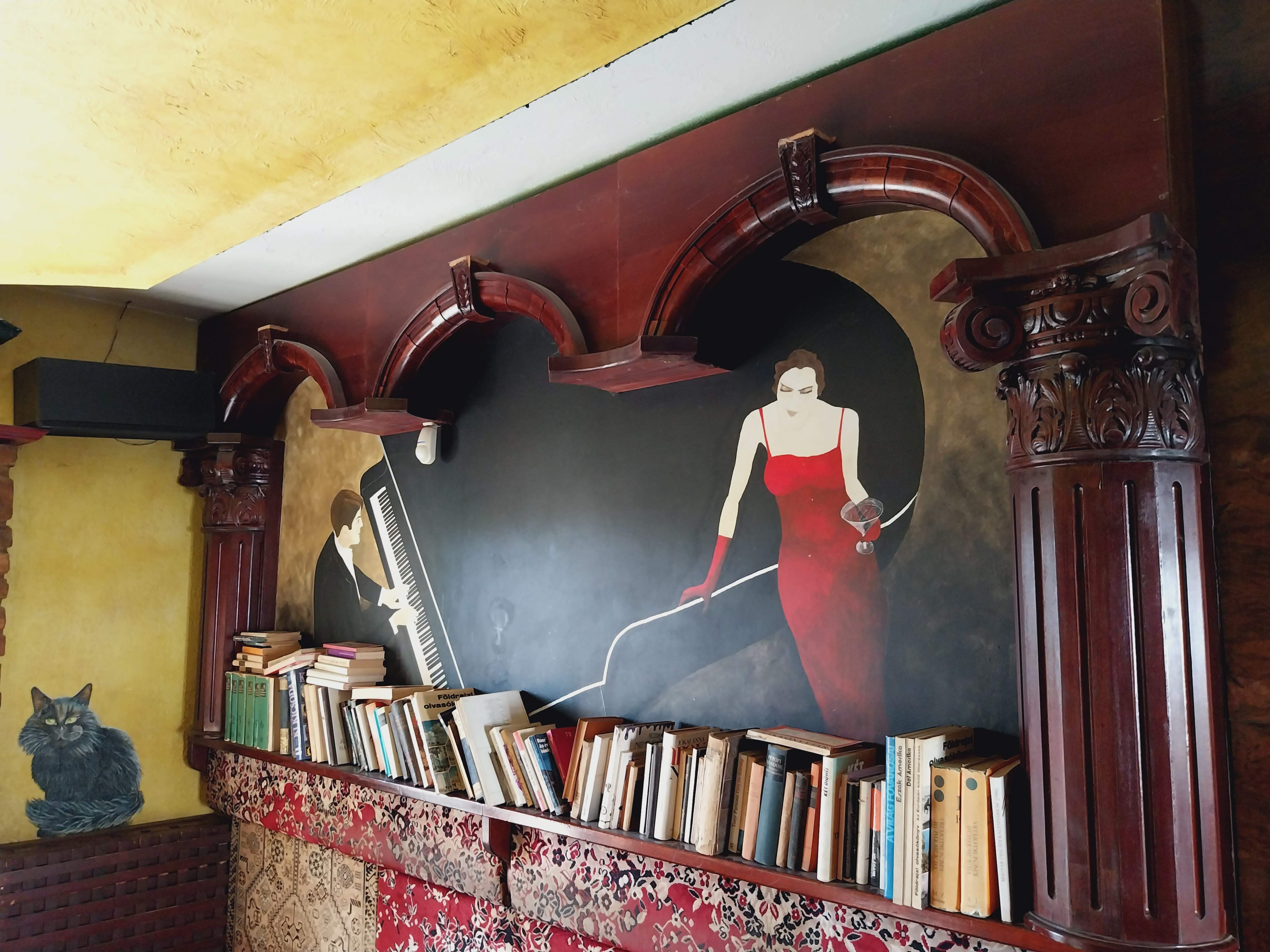
Interior of the Ínyenc Music Bistro
A Peaceful Getaway
With its Mediterranean atmosphere, Szentendre is truly one of Hungary's most unique town. So whether you're interested in art, architecture, or simply want to enjoy a peaceful riverside walk, Szentendre offers something for everyone. Its mix of cultures, colorful streets, and vibrant museum scene make it an ideal destination for a relaxed and rewarding day trip from Budapest.
